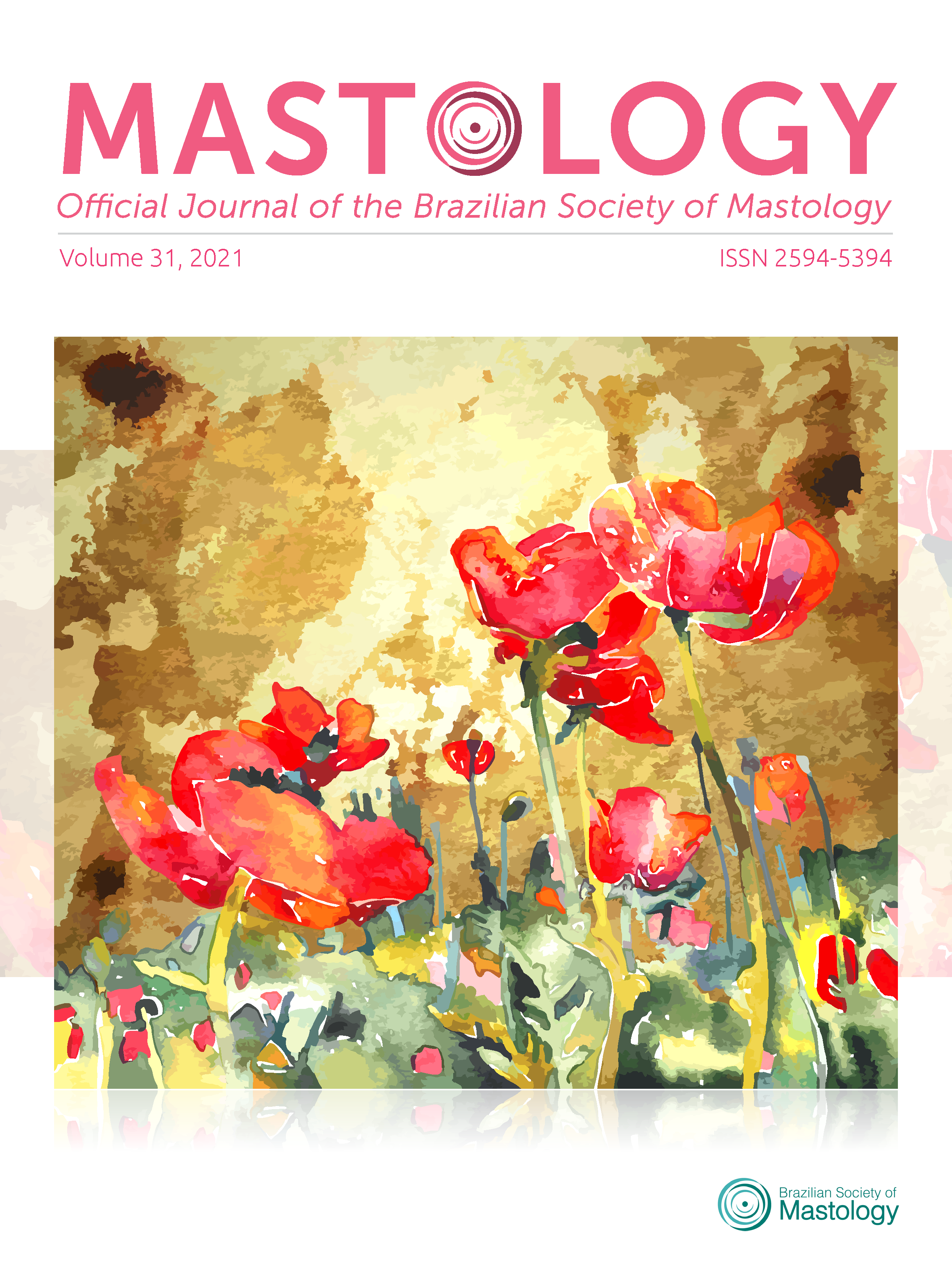How, when, and where information about breast cancer in Brazil is found using Google
Keywords:
breast neoplasms, information, mass screening, internet useAbstract
Introduction: This article sought to clarify the sources that women seek to find information about breast cancer. Methods: With a data collection from Google Trends, it was possible to list which keywords are most used when the population performs these searches and to know the volume of searches for the words “breast cancer” (câncer de mama ), “breast self-exam” (autoexame de mama), and “mammography” (mamografia) from 2009 to 2019. Results: In the search for “breast cancer” ( câncer de mama ), it was seen that the searches for “breast cancer” (câncer de mama ), “breast cancer symptoms” (câncer de mama sintomas ), “symptoms of breast cancer” (sintomas de câncer de mama ), “what is cancer of breast” (o que é câncer de mama ), and “types of breast cancer” (tipos de câncer de mama ) are the five most prevalent. Data were also displayed that reflect the importance of the awareness campaign for this type of cancer, the Pink October, since the months of October of the years in question were the ones that had the highest search volume for the keywords “cancer of breast” (câncer de mama), “breast self-examination” (autoexame de mama), and “mammography” (mamografia). In addition, it was noticed that many sites with a greater chance of getting hits due to their being in the first places in the survey did not have the name of the sources from which they had obtained their data and/or the names of the authors, and it was not possible to know the quality of the information published there. Conclusion: It is possible to notice the positive effect that the Pink October campaign has, which can contribute to a greater awareness of the importance of breast self- examination and mammography. In addition, it is necessary to be careful when looking for information in the online environment, since not all sites inform the source and/or the name of the author of the article.
Downloads
References
Leite Netto J. Influência da mídia no diagnóstico de câncer de mama [tese]. São Paulo: Fundação Antônio Prudente; 2019.
Rocha L. Como estar na primeira página de pesquisa do Google [Internet]. Brasil: Elevon; 2018 [cited on Mar 28, 2021]. Available from: https://www.elevon.com.br/primeira-pagina-do-google/
Sobreira F. Primeira página do Google NÃO é o mais importante [Internet]. Brasil: Flamm; 2018 [cited on Mar 28, 2021]. Available from: https://flammo.com.br/blog/primeira-pagina-do-google/
World Health Organization. Cancer Today [Internet]. World Health Organization; 2018 [cited on Mar 17, 2020]. Available from: https://gco.iarc.fr/today/home
INCA. Estimativa 2020: incidencia de cancer no Brasil [Internet]. Síntese de resultados e comentários: Estimativa 2020 [Internet]. INCA; 2020 [cited on Mar 27, 2020]. Available from: https://www.inca.gov.br/estimativa/sintese-de-resultados-e-comentarios
Veras R. Fórum. Envelhecimento populacional e as informações de saúde do PNAD: Demandas e desafios contemporâneos. Introdução. Cad Saúde Pública. 2007;23(10):2463-6. https://doi.org/10.1590/S0102-311X2007001000020
Godinho ER, Koch HA. Fontes utilizadas pelas mulheres para aquisição de conhecimentos sobre câncer de mama. Radiol Bras. 2005;38(3):169-73. https://doi.org/10.1590/S0100-39842005000300004
Lavorgna L, De Stefano M, Sparaco M, Moccia M, Abbadessa G, Montella P, et al. Fake news, influencers and health-related professional participation on the Web: A pilot study on a social-network of people with Multiple Sclerosis. Mult Scler Relat Disord. 2018;25:175-8. https://doi.org/10.1016/j.msard.2018.07.046
Kunst H, Groot D, Latthe PM, Latthe M, Khan KS. Accuracy of information on apparently credible websites : survey of five common health topics Follow up of quality of public oriented health information on the world wide web: systematic re-evaluation. Br Med
J. 2002;324(7337):581-2. https://doi.org/10.1136/bmj.324.7337.581
Cubas MR, Felchner PCZ. Análise das fontes de informação sobre os autoexames da mama disponíveis na internet. Ciênc Saúde Coletiva. 2012;17(4):965-70. https://doi.org/10.1590/S1413-81232012000400018
Wang Y, McKee M, Torbica A, Stuckler D. Systematic Literature Review on the Spread of Health-related Misinformation on Social Media. Soc Sci Med. 2019;240:112552. https://doi.org/10.1016/j.socscimed.2019.112552
Esen E, Aslan M, Sonbahar BÇ, Kerimoğlu RS. YouTube English videos as a source of information on breast self-examination. Breast Cancer Res Treat. 2019;173(3):629-35. https://doi.org/10.1007/s10549-018-5044-z
Chung JE, Lee C-J. The impact of cancer information online on cancer fatalism: education and eHealth literacy as moderators. Health Educ Res. 2019;34(6):543-55. https://doi.org/10.1093/her/cyz027
Mohamad M, Kok HS. Using Google trends data to study public interest in breast cancer screening in Malaysia. Asian Pacific J Cancer Prev. 2019;20(5):1427-32. https://dx.doi.org/10.31557%2FAPJCP.2019.20.5.1427
Quintanilha LF, Souza LN, Sanches D, Demarco RS, Fukutani KF. The impact of cancer campaigns in Brazil: A Google Trends analysis. Ecancermedicalscience. 2019;13:963. https://dx.doi.org/10.3332%2Fecancer.2019.963
Vazzoller PR, Fernandes YCF, Gotardo BA, Ruhnke J, Soltau DG. Impact of the pink October in the mammographic screening adherence in a reference center in oncology. Mastology. 2017;27(3):194-8. https://dx.doi.org/10.5327/Z2594539420170000212
Downloads
Published
How to Cite
Issue
Section
License
Copyright (c) 2021 Nicole Mayumi Hafner Ohira, Douglas Soltau Gomes

This work is licensed under a Creative Commons Attribution 4.0 International License.







